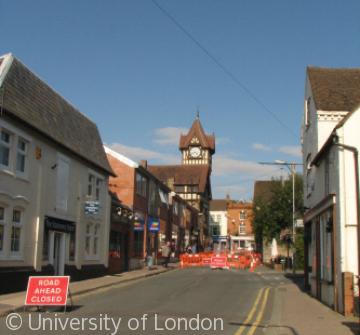Bye Street

The earliest name for the street, recorded from 1288, was Bishop Street, after the bishop of Hereford, who probably held land there. It was later believed, mistakenly, that a fourteenth-century building (now demolished) in the street was the medieval bishop’s palace. The name Bye Street occurs in wills of 1668 and 1680. Bishop Street was still the usual name in the early 19th century, although Bye Street was also used. On plans of 1824 and 1831, the road is called Bishop Street but in the accompanying guide books it is Bye Street. The name may be from ‘by’ or ‘bye’ meaning lesser (as in high ways and bye ways), and refer to the street’s relative unimportance by the seventeenth century. Alternatively, if it is an early name, Bye Street might possibly be derived from the Old English word ‘byge’ meaning ‘buy’ and used in at least one place-name with the sense of ‘market’. The name would be appropriate for this street, the wide west end of which was a secondary market. Until it was culverted in the 1830’s, a stream flowed down the middle of Bye Street from a water splash at the Lower Cross. This provided drainage for the cattle market that had expanded out of High Street, and supplied water to the tannery on the corner of High Street. The following links take you to buildings in Bye Street:
- The Barrett Browning Institute
Content generated during research for two paperback books 'Ledbury: A Market Town and its Tudor Heritage' (ISBN 13 : 978-1-86077-598-7) and 'Ledbury: People and Parish before the Reformation' (ISBN 13 : 978-1-86077-614-4) for the England's Past for Everyone series

